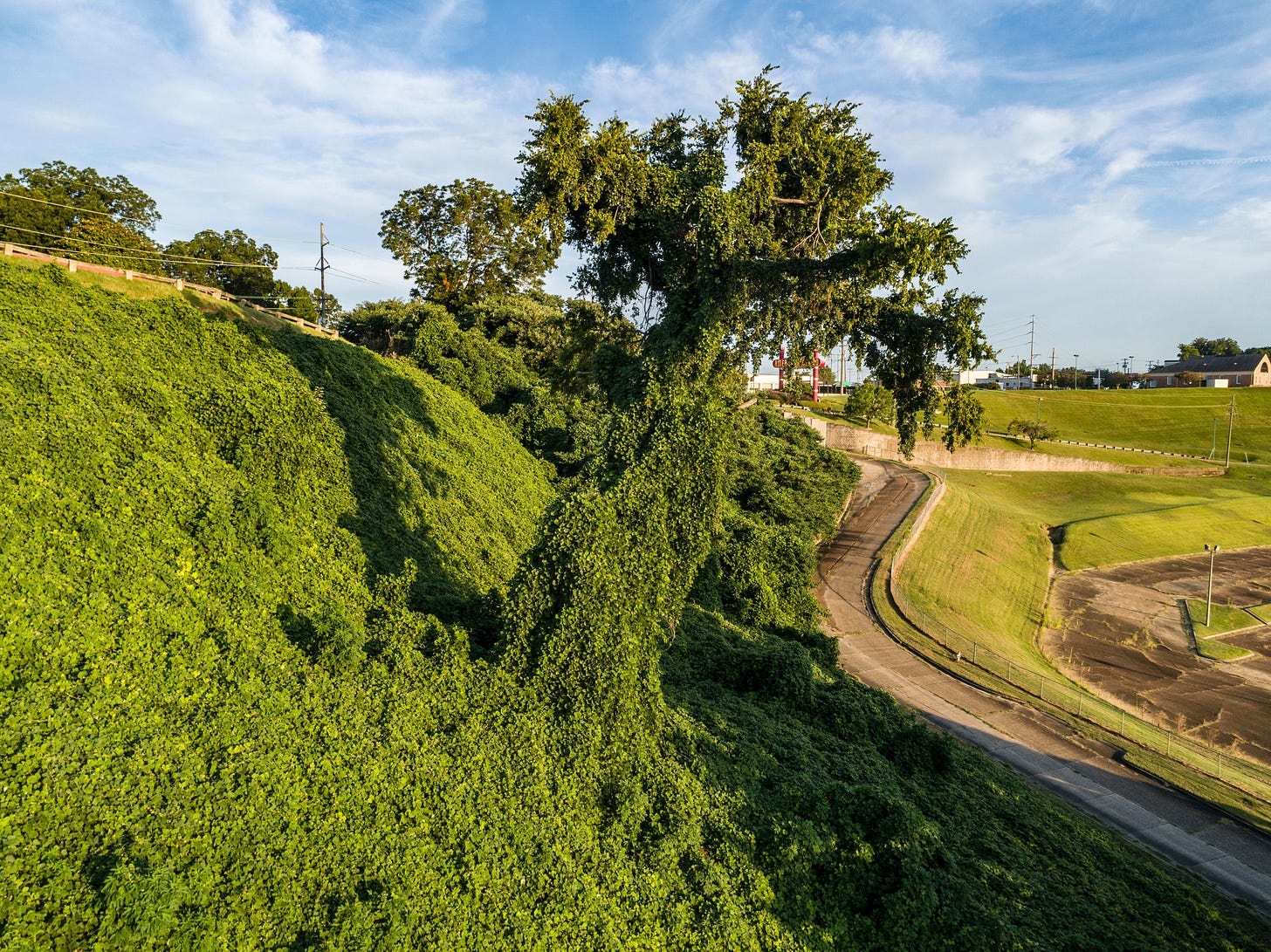The Root of the Problem That Covers the South
Getting rid of kudzu is an ongoing struggle. How did it become so prevalent?
I’ve spent several early mornings over the course of the summer dealing with kudzu on the edge of the yard close to the pool. If you’ve never had to contend with kudzu like we do here in the South, it’s hard to fathom how pervasive it can be.
If you’ve ever fought the kudzu battle, you know that there are two fronts. You can pull what you immediately see, and that gets rid of the most obvious presence of the vine. You won’t see the kudzu again for a while, but it’ll come back sooner.
The other strategy is to find the root of the kudzu vine as best you can and cut it there. Dealing with the vine that way can kill more at a time and ensure that it takes longer for it to come back. Besides, it’s satisfying to watch the leaves wither and die once you’ve cut the root.
The trouble is that it takes work to find the roots. Sometimes it comes up from the ground, while other times it can come up over the trees. The roots can grow large as well; I’ve cut roots bigger than my thumb.
Kudzu was introduced to the U.S. from Japan in 1876 as an ornamental vine as well as a guard against erosion. Those who originally promoted kudzu as something beneficial must not have realized how quickly it spreads. It’s not as fast as something out of a 1950s horror movie, but the U.S. Department of Agriculture estimates that kudzu takes over 150,000 acres a year.
Even though you can find kudzu outside the South, it has become entrenched enough in Southern culture that many people think of it as a Southern phenomenon.
We have one man in particular to thank for the prevalence of kudzu in the Deep South, and he happens to have hailed from my hometown.
For years I had seen the sign for Channing Cope Road and never knew who he was. Turns out, he was a popular radio host and columnist for the Atlanta Constitution in the mid-20th century. And he made sure he convinced as many people as possible that kudzu would save the South.
Cope wasn’t just an advocate. He was, as cultural geographer Derek Alderman suggests, an evangelist. Cope spoke of kudzu in religious terms: Kudzu, he proclaimed on his Depression-era broadcasts, would make barren Southern farms “live again.” There were hundreds of thousands of acres in the South “waiting for the healing touch of the miracle vine.”
Railroad and highway developers, desperate for something to cover the steep and unstable gashes they were carving into the land, planted the seedlings far and wide. There were kudzu queens and regionwide kudzu planting contests. By the early 1940s, Cope had started the Kudzu Club of America, with a membership of 20,000 and a goal of planting eight million acres across the South.
By 1945, only a little more than a million acres had been planted, and much of it was quickly grazed out or plowed under after federal payments stopped. Farmers still couldn’t find a way to make money from the crop. By the early 1950s, the Soil Conservation Service was quietly back-pedaling on its big kudzu push.
Now you know the story of kudzu. And you can be sure that, as I’m cutting roots and pulling vines, I’ll probably be badmouthing Channing Cope under my breath the whole time.
Photo by Justin Wilkens on Unsplash




